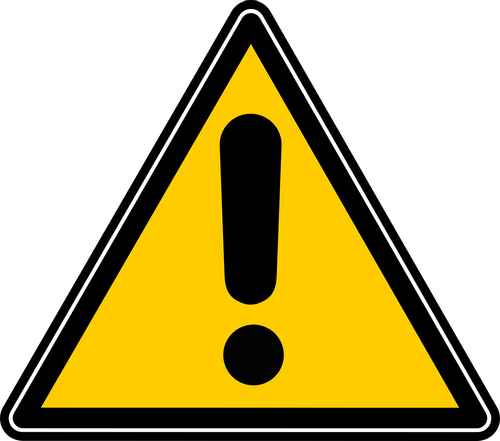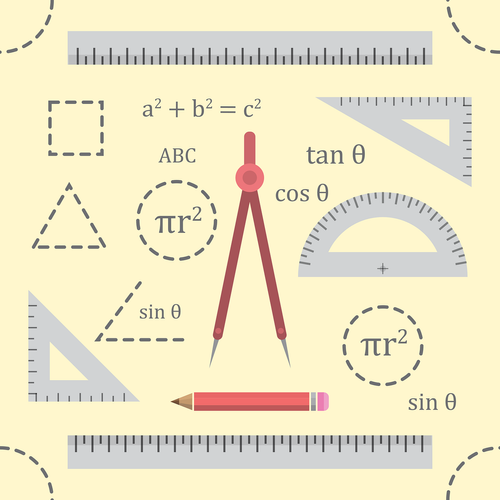Standards Packages
iTeh together with SIST has developed and compiled a comprehensive collection of standard packages to support your standard requirements. Our packages cover an array of content that includes quality management, risk management, road vehicles, machine safety, and much more. With over 200 packages to choose from, you are sure to find a collection to suit your standard needs.
Latest Standards
This document specifies requirements and provides recommendations for the interpretation of observations to reach opinions that answer questions that are relevant for decision making in investigations or legal proceedings. This document states requirements that are applicable to all forensic disciplines. This document states requirements that apply when the opinion is based directly on human judgement and when the opinion is based on interpretation through a statistical model. This document is applicable to interpretation that occurs at a scene, within a facility, or within a judicial setting. This document establishes requirements designed to safeguard the process for the interpretation of observations including the use of either statistical models or human judgement, to address alternative propositions based on the questions asked by the customer. Interpretation is not necessary and the requirements of this document do not apply if the observations resulting from the analysis directly answer the relevant question. EXAMPLE In analytical chemistry, substances are often identified or classified. Provided that the applied analytical methods are not limited in selectivity or sensitivity for the given question, the observations can lead to a direct statement of the name of the substance (identification) or a type of material (classification). This is not considered interpretation for the purposes of this document.
- Standard14 pagesEnglish languagesale 15% off
This document specifies two test methods for the determination of water content of raw rubber and compounded rubber using a coulometric Karl Fischer titration method: — method A uses an evaporator of heating tube type oven; — method B uses an evaporator of vial type oven. It applies to the water content range between 0,01 % and 1 %. In case of dispute, method B is the preferred method.
- Standard13 pagesEnglish languagesale 15% off
- Standard1 pageEnglish languagesale 15% off
- Standard1 pageFrench languagesale 15% off
This document specifies requirements for high chromium white cast iron grit, as supplied for blast-cleaning processes. It specifies ranges of particle sizes, together with corresponding grade designations. Values are specified for hardness, density, defect/structural requirements, metallographic structure and chemical composition. The requirements specified in this document apply to abrasives supplied in the new condition only. They do not apply to abrasives either during or after use. High chromium white cast iron grits are used in both static and site blasting equipment. They are most often selected where there is a possibility for the recovery and re-use of the abrasive. NOTE 1 Although this document has been developed for preparation of steelwork, these materials are predominantly used for non-ferrous substrates. The properties specified will generally be appropriate for use when preparing other material surfaces, or components, using blast-cleaning techniques, and can be used for applications where no subsequent coating is applied. NOTE 2 Whenever dissimilar metals are used together, galvanic corrosion can occur.
- Standard4 pagesEnglish languagesale 15% off
This document provides symbols and defines standard datasheets for some of the most often used microfluidic pumps, such as the peristaltic pump, pressure pump, syringe pump and diaphragm/membrane pump.
- Technical specification14 pagesEnglish languagesale 15% off
This document specifies requirements and provides recommendations to safeguard the process for the analysis of items of potential forensic value. It includes requirements and recommendations for the selection and application of suitable method(s) for the analysis to meet the needs of the customer and fulfil the request. The requirements are designed to ensure the use of suitable methods, proper controls, qualified personnel and appropriate analytical strategies throughout the forensic analysis of items. This document is applicable to activities conducted by a forensic service provider that occur at the scene and within a facility. This document is applicable to all disciplines of forensic science; however, it is not applicable to the recovery of digital data which is covered by ISO/IEC 27037. The requirements and recommendations facilitate the comprehensive, accurate and reliable analysis of items.
- Standard12 pagesEnglish languagesale 15% off
This document defines terms used for the different components of the forensic process from scene to courtroom (as illustrated in Figure A.1).
- Standard10 pagesEnglish languagesale 15% off
This document specifies performance tolerances and the technical data presentation for fans of all types. It does not apply for fans designed solely for low-volume air circulation, such as those used for household or similar purposes (ceiling and table fans, extractor fans, etc.). For jet fans, refer to ISO 13350. The upper limit of fan work per unit mass is normally 25 kJ/kg, corresponding to an increase of fan pressure of approximately 30 kPa for a mean density in the fan of 1,2 kg/m3. For higher values, agreement is to be reached between the supplier and the user. This document applies the five installation categories defined in ISO 5801: A free inlet, free outlet; B free inlet, ducted outlet; C ducted inlet, free outlet; D ducted inlet, ducted outlet; E free inlet and free outlet without a partition. The performance of a fan can vary considerably with the installation category it is operating within. Therefore, these categories form an important part of the definition of the fan’s technical data presentation. NOTE International acceptance of the five installation categories provides the opportunity to base a contract on the most appropriate fan category for the end user and the system designer. Correspondingly, the likelihood of the fan providing the agreed performance, without compromise or concession, is enhanced. The efficiency scaling procedures described in 8.1.5 apply to centrifugal fans and axial fans within the specific speed ranges shown in Table 4. To date, there is no experimental data to confirm how they apply to mixed flow fans, having specific speeds in between. Category E fans are treated in Clause 7.
- Standard77 pagesEnglish languagesale 15% off
- Standard80 pagesFrench languagesale 15% off
This document specifies methods for the determination of oxidation induction time (isothermal OIT) and oxidation induction temperature (dynamic OIT) of polymeric materials by means of differential scanning calorimetry (DSC). It is applicable to polyolefin resins that are in a fully stabilized or compounded form, either as raw materials or finished products. It can be applicable to other plastics.
- Standard12 pagesEnglish languagesale 15% off
- Standard13 pagesFrench languagesale 15% off
This document specifies general test criteria and requirements to measure the energy consumption for self-propelled industrial trucks (hereinafter referred to as trucks) during operation. For electric trucks, the efficiency of the battery and the battery charger is included. ISO 23308-2, ISO 23308-3, ISO 23308-4 and ISO 23308-6 contain additional, truck-specific requirements which build on those expressed in this document. This document is applicable to the in-use phase of the product life cycle. It applies to the following truck types as defined in ISO 5053-1: — counterbalance lift truck; — articulated counterbalance lift truck; — reach truck (with retractable mast or fork arm carriage); — straddle truck; — pallet-stacking truck; — pallet truck; — platform and stillage truck; — end-controlled pallet truck; — order-picking truck; — centre-controlled order-picking truck; — towing tractor; — pushing tractor; — burden and personnel carrier; — lorry-mounted truck; — towing and stacking tractor; — side-loading truck (one side only); — variable-reach container handler; — counterbalance container handler; — lateral-stacking truck (both sides); — lateral-stacking truck (three sides); — multi-directional lift truck; — variable-reach truck; — platform truck; — double-stacker; — rough-terrain truck; — rough-terrain variable-reach truck; — slewing rough-terrain variable-reach truck; — stacking high-lift straddle carrier.
- Standard20 pagesEnglish languagesale 15% off
- Standard21 pagesFrench languagesale 15% off
- Draft3 pagesEnglish languagesale 10% offe-Library read for1 day
IEC 61869-20:2025 This part of IEC 61869 specifies the requirements for the safe design and operation, and tests for the safety of instrument transformers whose highest voltage for equipment is higher than 1 kV AC or 1,5 kV DC. Low power instrument transformers are not covered by this document.
- Draft15 pagesEnglish languagesale 10% offe-Library read for1 day
This document specifies the characteristics of multilayer mechanical locked floor covering with a wear-resistant and decorative surface layer supplied in panels (either tile or plank form). The floor panels are considered suitable for domestic and commercial levels of use and designed for floating installation.
This document does not apply to resilient floor panels for loose-laying according to EN ISO 20326, to multilayer wood floorings according to EN 13489, to wood veneer floor coverings according to EN 14354, to laminate floor covering according to EN 13329, EN 14978 and EN 15468 nor to products specified in EN ISO 10581, EN ISO 10582, EN ISO 24011, EN 12104 and ISO 14486.
This document is applicable to areas which are subject to frequent wetting, e.g. bathrooms, laundry rooms or saunas, only if specified by the producer.
This document also includes requirements for marking and packaging.
In Annex A (informative), optional properties are given. In Annex B (informative), a test method for the classification of the flexibility is given.
- Standard15 pagesEnglish languagesale 10% offe-Library read for1 day
The purpose of this document is to provide customers and their suppliers with a document specifying the notions of “construction” and “management” of product dependability and safety (RAMS).
It offers programme directors and project managers information likely to help them:
— determine the tasks to be performed and the application procedures, according to the specific nature of the programme and its goals;
— define and implement the provisions necessary for performing these tasks;
— within programme execution, situate the various tasks involved in constructing and managing the RAMS of a product.
This document applies to all programmes that involve customer/supplier relation.
RAMS management concerns not only all the products covered by these programmes, but also the components of these products and the production and support resources and processes to be implemented.
The provisions of this document can be negotiated at all levels between the parties directly concerned by a given programme. This implies, on the part of the ordering parties, that each lower level is provided with the information needed to perform the tasks and meet the specified targets. This also implies, on the part of suppliers, an escalation of information pertaining to the RAMS results of the products for which they are responsible.
This document is mainly concerned with the technical aspects, aspects of a legislative (in particular safety at work and regulatory conformity) and confidential nature are not dealt with in this document.
- Standard44 pagesEnglish languagesale 10% offe-Library read for1 day
The purpose of this document is to provide customers and their suppliers with a document specifying the notions of product reliability "construction" and "management".
It offers programme directors and project managers information likely to help them:
- determine the tasks to be performed and the application procedures, according to the specific nature of the programme and its goals;
- define and implement the provisions necessary for performing these tasks;
- within programme execution, situate the various tasks involved in constructing and managing the reliability of a product.
This document applies to all programmes (in particular aeronautical, space and armament programmes).
These reliability construction procedures concern not only all the products and its constituents covered by these programmes, but also the means and manufacturing processes to be implemented for their realization.
The provisions of this document can be negotiated at all levels between the parties directly concerned by a given programme. This implies, on the part of the customer, that each lower level is provided with the information necessary to perform tasks and meet the specified targets.
- Standard30 pagesEnglish languagesale 10% offe-Library read for1 day
This document specifies a test method for determining the leak tightness and the ease of operation and stop resistance of a valve made of thermoplastic material following an impact applied to the operating device.
- Standard12 pagesEnglish languagesale 10% offe-Library read for1 day
- Draft12 pagesEnglish languagesale 10% offe-Library read for1 day
IEC 62290-2:2025 specifies the functional requirements of UGTMS (urban guided transport management and command/control systems) for use in urban guided passenger transport lines and networks. This document is applicable for new lines or for upgrading existing signalling and command control systems. The IEC 62290 series specifies the functional, system and interface requirements for the command, control, and management systems intended to be used on urban, guided passenger transport lines and networks. These systems are designated herein as urban guided transport management and command/control systems (UGTMS). UGTMS cover a wide range of operations needs from non-automated (GOA1) to unattended (GOA4) operation. A line may be equipped with UGTMS on its full length or only partly equipped. The IEC 62290 series does not specifically address security issues. However, aspects of safety requirements may apply to ensuring security within the urban guided transit system. The main objectives of this series are as follows: * to provide a baseline system description and functional requirements specification for a transport authority to use in a request for proposal, * to provide recommendations for those transport authorities wishing to acquire an interoperable or interchangeable system. It is the responsibility of the transport authority concerned to decide on how to apply the IEC 62290 series and to take into account their particular needs. This document is applicable to applications using * continuous data transmission, * continuous supervision of train movements by train protection profile, and * localisation of trains by onboard UGTMS equipment (reporting trains), and optionally by external wayside (and optionally onboard) device. In this document, the functional requirements set the framework to which detailed functions are added to define any generic or specific application. Because of that, although this document is applicable as a basis to define SRS, FIS and FFFIS, elements can be added for a generic or specific application. This third edition cancels and replaces the second edition published in 2014. This edition constitutes a technical revision. This edition includes the following significant technical changes with respect to the previous edition: a) the functions 5.1.4.5 Stopping a train en route, 5.1.5.4 Monitor speed limit at discrete location, 5.5.5 Manage UGTMS transfer tracks, 5.6.4.1 Monitor passenger emergency calls and 6.2.4 Ensure connecting services have been deleted; b) the functions 5.5.11 Manage train washing, 5.5.12 Manage non-stopping areas and 6.3.4 Perform progressive shutdown have been added; c) many of the requirements have been reworded: changes in their wording could be only minor and editorial, or it could have technical consequences; d) some requirements of the second edition have been moved from one function/subfunction to another; e) some requirements have been deleted; f) some new requirements have been added in the existing functions; g) an informative annex giving the reader some user’s recommendations about this document has been added; h) another informative annex giving some typical performance-related criteria has been also added. i) an informative annex providing a summary of applicability of functions and subfunctions (mandatory or optional) depending on GOA has been added. In order to avoid any disturbance in the use of the document, when functions or requirements of IEC
- Draft83 pagesEnglish languagesale 10% offe-Library read for1 day
This document lays down the requirements for the HBES Point API extension to the EN 50090 series, allowing vendor independent communication between smart home and building devices on IPv6 networks.
- Draft192 pagesEnglish languagesale 10% offe-Library read for1 day
IEC 61987-41: 2025 provides: • a characterization for the integration of process analysers in the Common Data Dictionary (CDD), • generic structures for operating lists of properties (OLOP) and device lists of properties (DLOP) of measuring equipment in conformance with IEC 61987-10, • generic structures for Dynamic Data, e.g. for condition monitoring of process analysers. The generic structures for the OLOP and DLOP contain the most important blocks for process analysers. Blocks pertaining to a specific equipment type will be described in the corresponding part of the IEC 61987 standard series. Similarly, equipment properties are not part of this document. Thus, OLOP, DLOPs and LOPDs for selected process analysers families will be found in the IEC CDD.
- Draft21 pagesEnglish languagesale 10% offe-Library read for1 day
Benefits

Full Standards Solution
Our catalog includes not only latest standards but also full meta information about related standardization project lifecycle.

Cost Effective
Our PRICE MATCH GUARANTEE policy with multi-level volume discounts gives our clients the best option in the market. In addition, you can get access to the standards for 3, 10, or 30 days.

Stay Notified
Get alerted to the latest revisions and new standards in the Weekly Newsletter. Standards are constantly changing. Don’t miss a revision that can impact your business.
About Us
iTeh Inc is a software development and IT consulting team of professionals who provide consulting, development and implementation of solutions for all types of businesses.
In cooperation, with the Slovenian Institute of Standardization (SIST), we create a unique solution that covers all aspects of the lifecycle of Standardization organizations. iTeh Standards is a part of the solution that helps SIST to provide and sell their products to Customers.
iTeh Standards Store is an evolving project, our goal is to build long-term relationships with our customers. We believe in delivering quality services to solve our customers' challenges and define success by exceeding our customers' expectations. We are always ready to listen and our experience allows us to provide our customers with helpful effective suggestions. You can contact us by email.
We are committed to providing the best possible experience for our customers.
Compliance with international standards is increasingly becoming one of the key competitive advantages in the global market. Our company creates all conditions for the most comfortable implementation of new documents and norms in the processes carried out by your organization. Some of the key advantages of working with us are:
- Cost-effective - multi-level discounts and permanent updates of the functions give our clients the best option on the market.
- e-Library - access to standards for a period of time of your choice. It is a cost-effective solution for keeping updated with the newest standards.
- Company-wide documents - create a company account and connect all employees with access to purchased standards, e-Library documents, and packages.
- All in one spot - all purchased standards are kept in one place with controlled access by the account administrator.
- Client-centric - providing quality consulting is the prerogative and incentive to create new products that accompany your success and scale.
- 24 / 7 client support
We are dedicated to building mutually beneficial and long-term relationships with our clients. That is why our team focuses on creating services to help our customers develop and achieve new productive results.
























